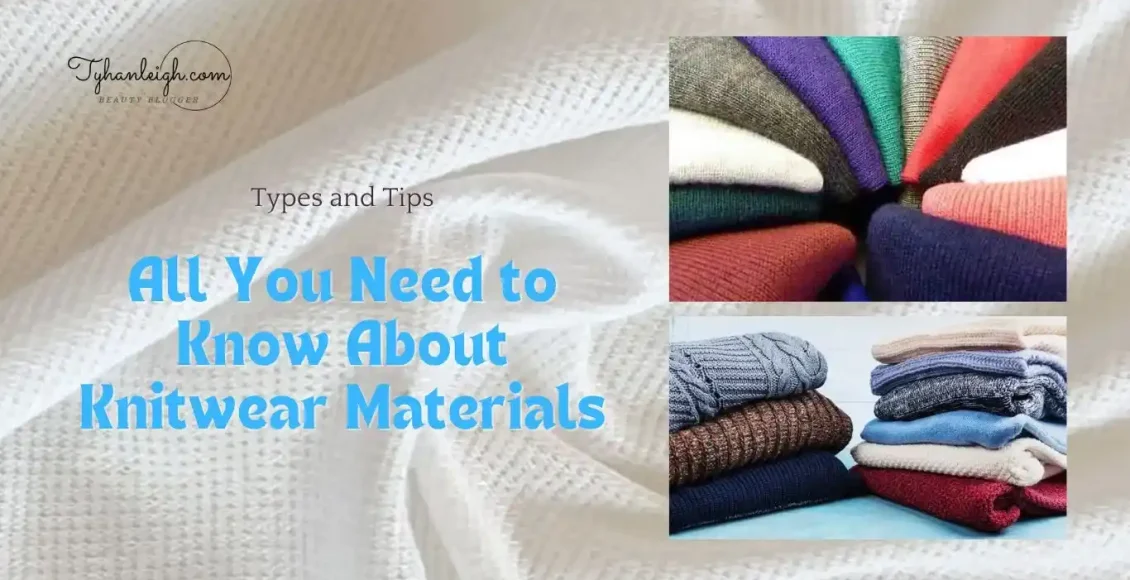tyhanleigh.com personal fashion stylist – There are several factors to consider before you buy knitwear, and one of them is the knitwear materials. From the soft luxury of cashmere to the versatile practicality of acrylic, each of them has different characteristics.
Whether seeking design, warmth, comfort, or ease of care, knowing these materials can help you select the one that aligns with your preferences and lifestyle. Therefore, let’s get started with this guide!
What Exactly are Knitwear Materials?
Before we delve into the details, let’s clarify what knitwear material actually is. Essentially, these materials are fabrics that are formed through the process of knitting threads together. This results in a cosy, stretchy fabric that’s perfect for creating sweaters and cardigans.
Now, you might be wondering, what sets knit materials apart from woven fabrics? Well, it all comes down to the way they’re constructed. Knit fabrics are created by interlocking loops of yarn, which gives them their signature stretchiness and flexibility.
On the other hand, woven fabrics are made by weaving threads together on a loom, resulting in a tighter, less stretchy fabric.
Types of Knitwear Materials
Now that we’ve covered the basics, let’s take a closer look at the different types of knit materials available:
-
Cashmere
Made from the fine hair of goats from Mongolia and China, cashmere is renowned for its softness and silky texture. Not only is it long-lasting, but it’s also highly adaptable to climate change, making it a versatile choice for any wardrobe.
-
Merino Wool
If you’re looking for a material that’s gentle on the skin, look no further than merino wool. Thinner and softer than regular wool, merino wool offers excellent insulation against the cold while also resisting odour, making it perfect for those on the go.
-
Lamb’s Wool
The next list of knitwear materials you should know is lamb’s wool. As the name suggests, it comes from the first shearing of lambs that are around seven or eight months old and is prized for its extreme softness, elasticity, and slipperiness.
-
Acrylic
For those seeking a more budget-friendly option, acrylic is the way to go. This artificial fibre is designed to mimic the qualities of wool while being low maintenance and easy to care for. Plus, it’s machine washable, making it a practical choice for you.
Other articles:
Types of Knitwear Fabrics
Besides the knitwear materials mentioned above, knit items are also available in various types of fabrics, each with its own unique characteristics and advantages. Let’s explore them:
-
Weft-Knitted
In this type of knitting, one continuous thread is used to create interlocking loops horizontally across the fabric’s width. This category includes popular fabrics, such as:
- Jersey Knit, characterised by its lightweight and soft texture, is perfect for everyday casual wear, such as t-shirts.
- Rib Knit, features distinct vertical ribs formed by alternating knit and purl stitches, offering excellent stretch and a cosy feel.
- Interlock Knit, is a variation of rib knit where two layers of fabric are simultaneously knitted together, resulting in a thicker and more durable material, ideal for activewear.
-
Warp-Knitted Fabrics
Warp-knitted knitwear materials are created with multiple threads, with each needle looping its own thread vertically down the fabric. While these types are less common, they offer unique textures and characteristics. Here are the examples:
- Tricot Knits, are tightly knit fabrics with a slight rib texture, providing firmness and durability, suitable for activewear and swimwear.
- Raschel Knits, are made with textured yarns, often resembling lace or crochet. While they may not stretch as well, they offer stunning designs and are perfect for special occasion garments.
Tips: How to Choose the Best Material for Your Needs?
Last but not least, what are things to consider when choosing a knit material for you? As a simple guide, let’s check out the list below:
-
Consider Quality
First, opt for high-quality fabrics that are durable and long-lasting. It is better to look for certifications that demonstrate a commitment to quality production methods.
-
Think About Your Needs
Consider the intended use of the garment and choose a material that suits your lifestyle. For example, if you’re constantly active outdoors, opt for a material that’s easy to care for and resistant to odour.
-
Explore Sustainability
Next, consider opting for materials that prioritise sustainability. Look for manufacturers that use eco-friendly materials and sustainable production methods, such as GOTS-certified items.
Still confused to choose? Whatever your favourite pick is, don’t be afraid to try out different knitwear materials to see what works best for you!


